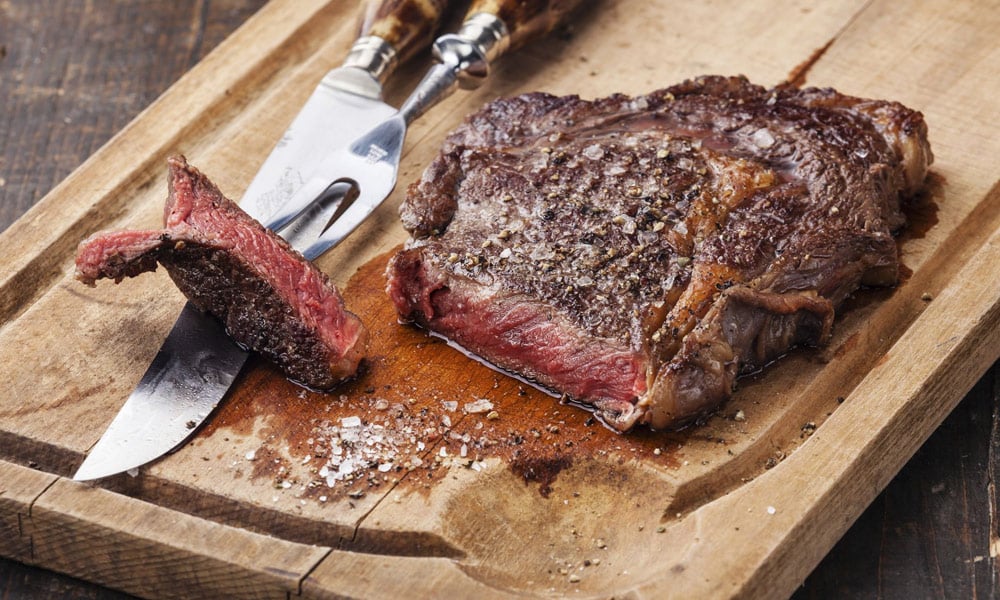Cooking steaks is an art form that gets simplified all too often. Every week, we’re reading new articles about how to cook the perfect steak. Sometimes, it’s a flat top grill. Sometimes you slap meat on a metal grate above a fire. Hell, sometimes it’s in a bag of water. There are a million ways to cook a good steak, and while each one is different, they all result in one of the most-loved and sought after meals man has ever dreamed of—delicious, juicy, mouth watering steak.
How you wind up cooking a steak depends on a lot of things, including the kind of cut you’re working with, the tools at your disposal, and of course, your preferred outcome. We put together this guide to help point you in the right direction.
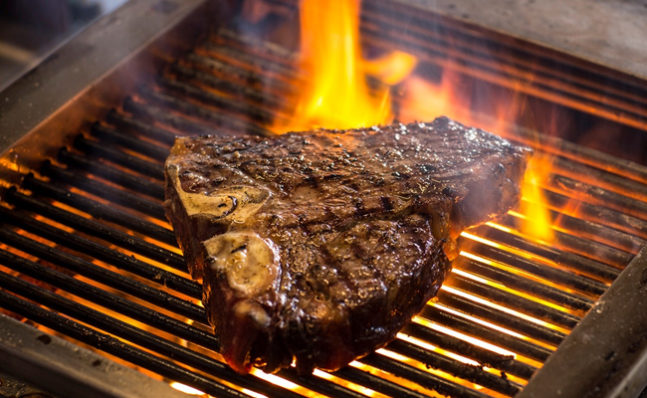
What to Cook Your Steak In
If you’re not a steak connoisseur (and if you’re reading this article, we’d bet you’re not), the best way to cook a steak really depends on the tools you have at your disposal. Yes, while you can technically cook any cut of steak any way you want, some steaks are better meant for different apparatuses. Filet mignon, for instance, is best done in a skillet (and maybe finished in the oven, depending); not the grill. Bone-in steaks—like T-bone—are best suited to the grill because when the bone gets a good flame char to it, the flavor is damn near unbeatable.
The point is, there are several different pieces of equipment needed to cook a good steak.

Skillet
We’ve seen a huge resurgence recently in the skillet-cooked steak scene, and we certainly aren’t complaining. Fans of the skillet method love the fact that you can get a good, crunchy sear on damn near any cut of beef, while keeping the inside a good, medium rare. Link

Grill
The undisputed most common way to cook a steak, grilling is generally easy and pretty hassle-free. There are a bunch of different types and styles of grills, but primarily, you’re going to choose between gas or charcoal—a debate that really comes down to preference. Luckily, the differences between the two styles are pretty easily highlighted. All you need to do is decide which one better fits your lifestyle. Link
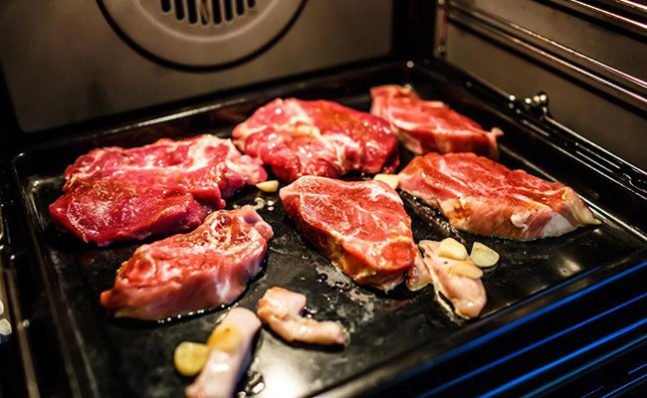
Oven
We’ve also seen a huge surge in oven-cooked steaks, which we’re certainly not opposed to. It’s an easy set-and-forget method that’s similar to regular grilling, only the flame comes from above, not below. The increasingly popular reverse sear method incorporates the best of both worlds—tossing your steak in the oven to cook inside, then taking it out and giving it a good old-fashioned stove-top pan- or skillet-sear until its crusty and delicious and perfect. Link
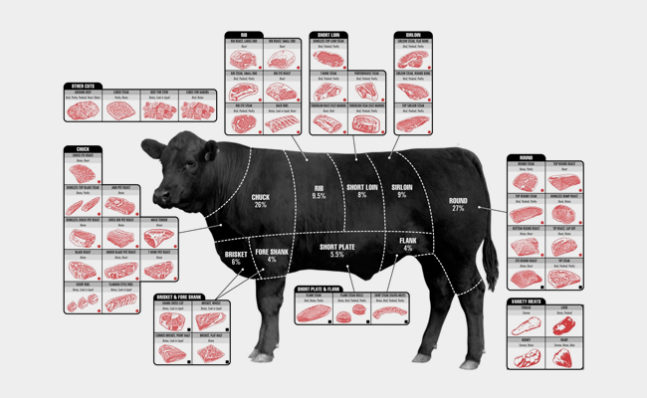
Cuts of Steak
There are dozens—literally dozens—of different types of steak out there, all of which depend on a mix of their age, feed type, place of origin, marbling, etc. Going through that would take us hours, but the folks at Steak Perfection did a fine job summarizing the minutia, in case you’re really looking to nerd out right now.
But even if you’re looking for the basics of steak cuts, there’s a lot to learn. There are bone-in steaks, and boneless steaks. There are filets, ribeyes, T-bones, porterhouses, strip steaks and plenty of others—a whole cow’s worth, in fact.
The easiest way to learn about the different cuts of steak out there would be gander at a chart like this from our friends over at Gentleman’s Gazette. It goes through every section of the cow, from round, shank, and rump, to chuck, neck, and breast, as well as every cut of meat you’ll find in those sections (complete with detailed photos).
If you want to learn about the differences between the more popular steaks out there, Tasting Table put together an excellent guide that covers most—if not all—of the popular steak cuts out there, including: Filet mignon, ribeye, New York strip, and porterhouse, along with less popular cuts like skirt and hanger.
One thing they get wrong, however, is there is a difference between porterhouse and t-bones—and it’s an important one. But hey, nobody’s perfect.
Cooking Methods
Now that we’ve discussed what you’re going to use to cook your steak and the kinds of steak you’re going to cook, let’s talk technique. Now, the tough part here is that just when you thought you had a pretty good handle on things, you realize there are a million different ways to cook a steak—and none of them suck.
While your primary suspects will come from the grill, oven, or skillet, there are a multitude of other, equally incredible ways of cooking steaks.
For instance, like we mentioned above, Sous Vide (pronounced Soo-VEED) involves basically putting the steak in a plastic bag, heating it up with hot water to a certain temperature, and then finishing it in a pan to give it a nice, solid crust. The reason why we love Sous Vide so much is you get almost edge-to-edge perfect red/pink/medium/whatever doneness, and that nice sear that everybody knows and loves. With other methods, you get only a center portion of the meat that’s cooked perfectly, while the outer edges are more well done.
There is also a ton of other ways to cook steak. You can country fry them, you can mince them and toss them on a sub roll, you can serve them raw in steak tartare, you can grind the sumbitch up and mold it into cheese burgers, marinade it for a couple days and Korean barbecue it… You can do whatever you want. If you’re looking for some more inspiration, check out these recommendations from An Idea Lives On. We have no idea who they are or what their website is about, but we can guarantee that at least one person over there really loves steak.

How To Tell Doneness
“Doneness” is a relative term, and the sooner you acknowledge and accept that, the better off you’ll be. That said, steaks are cooked to a few separate specifications: Well, medium well, medium, medium rare, and rare. This graphic excellently demonstrates the difference between each level.
Most connoisseurs and chefs tend to agree that medium steaks are the best steaks, and lend themselves to the highest level of juiciness, flavor, and succulence. Of course, everybody has different tastes and preferences. Plus, some cuts of steak actually do better when cooked certain ways.
Once you know the level of doneness you prefer, learning how to cook it that way is a whole different ball game. The most reliable method is using a meat thermometer to check the steak’s internal temperature. Of course, if you don’t have that, you can always guesstimate cook time based on thickness and grill temperature. This guide gives precise measurements, and even gets into specific cuts of meats.
Our favorite way—and the most old school way out there—is the thumb touch test. It’s accurate and will work no matter what kind of steak you’re cooking, how thick it is, or how you’re cooking it.
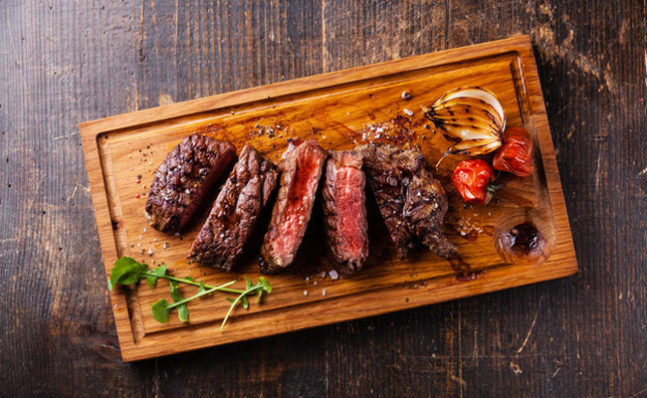
Popular Steak Myths
The most peculiar thing about steak culture is that everybody has certain tiny details that have been passed down from generation to generation that aren’t true, but are always presented as fact.
For instance, did you know that taking a steak out 20 minutes before you cook it has no real influence on that steak’s cookability? Or that filet mignon isn’t the best cut of steak out there? Or that searing meat at high heat doesn’t “lock in” its juices?
There are a bunch of steak myths out there, but these are some of our favorite. And these.
Truthfully, the best way to learn about cooking steak is to dig in and learn for yourself. That said, get to it, and good luck!

